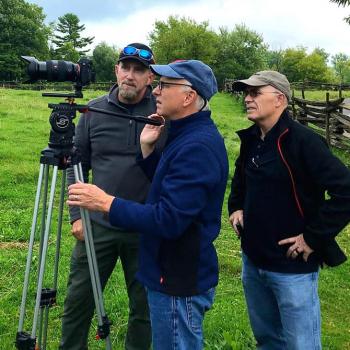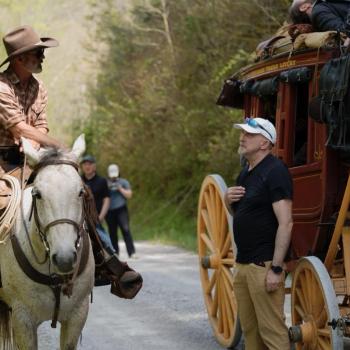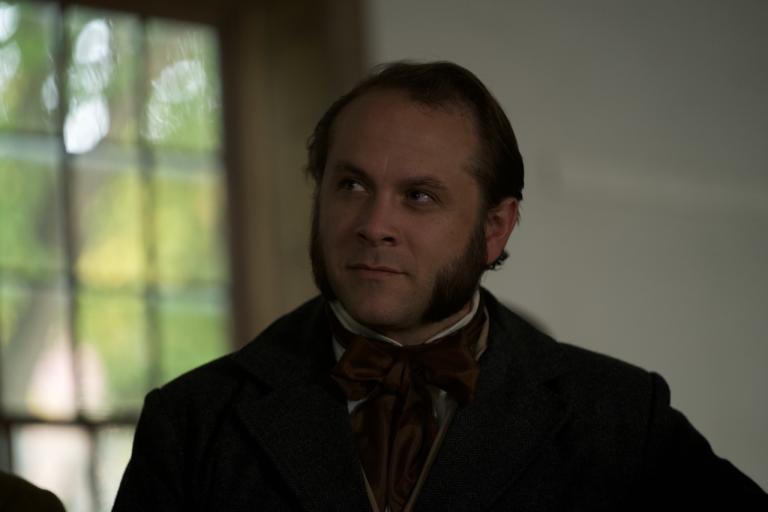
Some here may be interested in this 44-minute discussion between an Evangelical Protestant and a Latter-day Saint: “Heretic Review: Why Everyone Should Oppose Religious Misrepresentations.” I myself have listened, thus far, to only about twenty-five percent of the recording, but I’ve enjoyed it thus far.
In this conversation, Jacob Hansen and Jeff McCullough discuss the recent film ‘Heretic’ and its portrayal of Latter-day Saints and Christianity. They explore the broader themes of media representation, the exploitation of religious beliefs, and the misconceptions surrounding faith. The discussion delves into the importance of accurate representation in media, the nature of worship, and the cultural critiques of Christianity, ultimately emphasizing the transformative power of faith and the need for genuine understanding between different belief systems.
At least one of them — the Evangelical — hasn’t actually seen the movie, but he says that he has read a great deal about it. In any case, the discussion isn’t entirely about the film as such.
Incidentally, according to IMDb, Heretic is currently ranked fourth at the box office in the United States. It took in $5.2 million over this past weekend. I read at the Peterson Obsession Board that I’m absolutely livid with impotent jealous rage. Of course, it never so much as entered my mind that our Six Days in August, an indie film aimed at a niche market and backed by a modest budget, would compete with national Hollywood releases — but I suppose that pretending otherwise makes for amusing message-board conversations.
While I’m on the subject, though: We are now far along in our preparations for its streaming and for its release in DVD and Blu-ray formats. My wife and I spent some time on Saturday morning (as did our associates) spot-checking a preliminary DVD of it that includes both English and Spanish subtitles. But I’m told that Six Days in August is maybe holding on by its fingernails in a small handful of theaters. If that is true — and, right now, I don’t know for sure whether or not it is, although I believe that it’s still in five theaters — I hope that some of you will take the opportunity to see it again, or to see it for the first time, or to take friends or neighbors or family who haven’t yet seen it. As I’ve said here before, the cinematography of Six Days in August is beautiful and is well worth seeing on a large screen; its musical score is likewise beautiful and is worthy of hearing on a good theatrical sound system.
I continue to be puzzled by the film’s failure at the box office. I’ve been disappointed to hear from more than a few people in my own neighborhood and among my own acquaintances that, well, they had vaguely kinda heard of Six Days in August and had sorta thought about maybe going to see it sometime but, well, they just don’t go to movies very often and just hadn’t gotten around to it. We always knew that our window of theatrical opportunity for the film was going to be small, and now it has closed.
I remain proud of the effort, though. Six Days in August is a solid, good film about an important story. Our filmmakers did a superb job with it. I hope that many out there will stream it when it becomes available and/or that they will buy it on DVD or Blu-ray when the formats are out. (If Latter-day Saint cinema is ever going to be economically viable, Latter-day Saint audiences will need to spend some money on it.) And now we look forward to going to work on the docudrama with which we had always intended to follow it, and which is already partly “in the can.”
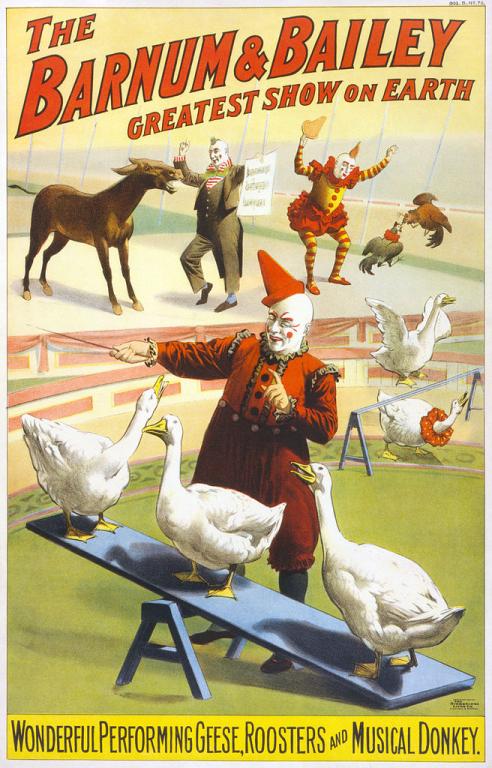
Over the fifteen to twenty years that he’s devoted himself to continual, anonymous, disingenuous, and invariably negative online commentary on me and all my works (both real and imagined), my Malevolent Stalker has often struck me as unethical and implacably hostile but rather clever, if not altogether cunning. Sometimes, though — today, for example — he strikes me, quite simply, as intellectually . . . well, limited. (I’m being as diplomatic as I can be, given the facts of the case.) He may be feigning such limitation, of course. But he may not. And he has the advantage of performing for an uncritical and eagerly credulous audience.
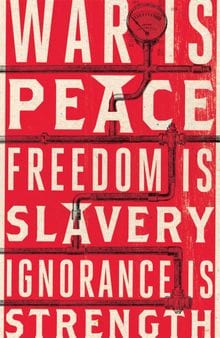
(Wikimedia Commons public domain image)
A common theme of items that have been retrieved from the Christopher Hitchens Memorial “How Religion Poisons Everything” File™ is the evils that are done by theists and theism. But what about benefits that the apparently ongoing decline of religion and religiosity seem to offer us? A pair of such potential gains — rape and suicide — forms the subject of this recent Hitchens File entry: Philip Truscott, “Rape, Suicide, and the Rise of Religious Nones,” Journal of Sociology and Christianity 14/2 (Fall 2024): 34-58:
Abstract: One of the most widely quoted concepts in late twentieth century criminology was the general theory of crime which proposed that insufficiency of self-control is the most important predictor of criminal behavior. The presence or absence of social bonds promoting self-control is an important element of this theory. This article argues that the decline of one important societal bond, religious affiliation, is impacting the incidence of rape. Since the 2010s, there has been a positive correlation between the proportion of the population declaring no religious affiliation (the “None” rate) in the 50 USA states and the campus rape rate. This correlation was significant in the four years from 2016 (r=0.464, p.0.001) to 2019 (r=0.393, p.0.005). Beginning in 2018, the None rate in the 50 states also correlates with the rape rate in the general US population (r=.343, p. 0.015) identified by Uniform Crime Report (UCR) data published by the Federal Bureau of Investigation. Was this due to a variation in actual crimes or in reporting rates?Recent data make the reporting rate explanation implausible. Furthermore, the UCR rape rate is directly correlated with another violence statistic that is not susceptible to reporting error: suicide rates published by the CDC. This research contends that suicide rates are a proxy indicator for male self-control, as three quarters of suicides are male. Rape perpetration is also overwhelmingly male. The correlation of rape rates and suicide rates in the USA rose from 2014 (r=.55, p. = 0.00001) to 2019 (r=.66, p. = 0.0000001). It is argued that declining religiosity is lowering self-control, and that this is a plausible mechanism driving both increased rape and suicide.





